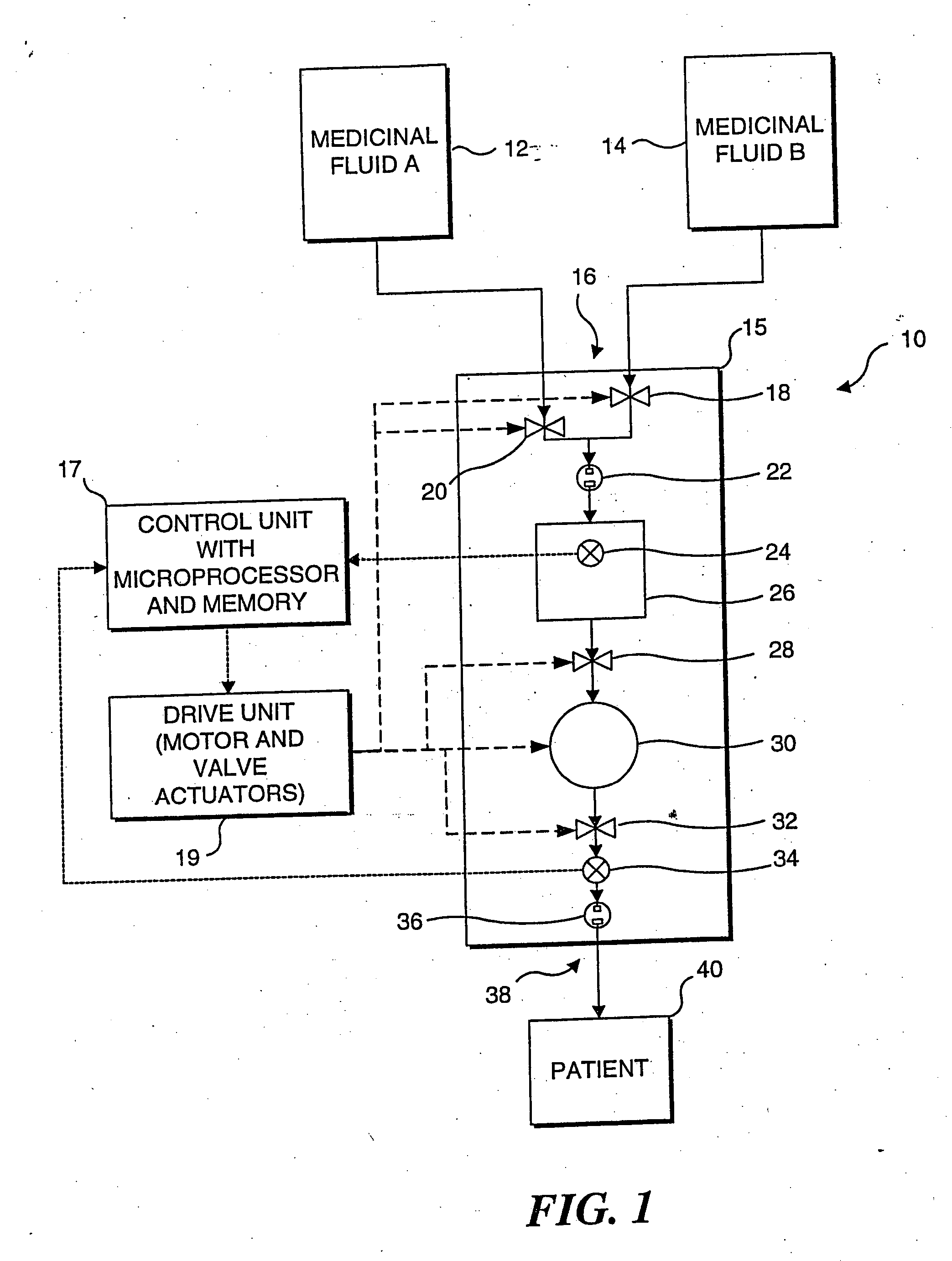Method for compensating for pressure differences across valves in cassette type IV pump
a cassette type iv pump and valve technology, applied in the direction of fluid pressure control, positive displacement liquid engine, instruments, etc., can solve the problems of retrograde flow, significant impairment of accuracy, and degraded delivery accuracy of cassette pump, so as to achieve accurate fluid delivery and accurate fluid delivery to the patient
- Summary
- Abstract
- Description
- Claims
- Application Information
AI Technical Summary
Benefits of technology
Problems solved by technology
Method used
Image
Examples
Embodiment Construction
[0032] The present invention employs an algorithm to compensate for a differential pressure between the inlet and outlet of a cassette type infusion pump to enhance the accuracy of the pump, particularly at low flow rates. A preferred embodiment of the present invention will be incorporated in Abbott Laboratories' PLUM A +™ Infusion Pump, which will be used in conjunction with its PLUM™ Cassette. The algorithm used in this embodiment has been empirically determined for these specific products. However, it should be noted that a similar algorithm can be empirically determined for other designs of infusion cassettes and infusion pumps. The present invention is thus not in any way limited to the specific design of the pump and cassette discussed below.
[0033] The terms “proximal” and “inlet” as used herein in connection with the following description and the claims that follow synonymously refer to the portion of the cassette that is coupled in fluid communication with a fluid line (or...
PUM
 Login to View More
Login to View More Abstract
Description
Claims
Application Information
 Login to View More
Login to View More - R&D
- Intellectual Property
- Life Sciences
- Materials
- Tech Scout
- Unparalleled Data Quality
- Higher Quality Content
- 60% Fewer Hallucinations
Browse by: Latest US Patents, China's latest patents, Technical Efficacy Thesaurus, Application Domain, Technology Topic, Popular Technical Reports.
© 2025 PatSnap. All rights reserved.Legal|Privacy policy|Modern Slavery Act Transparency Statement|Sitemap|About US| Contact US: help@patsnap.com



